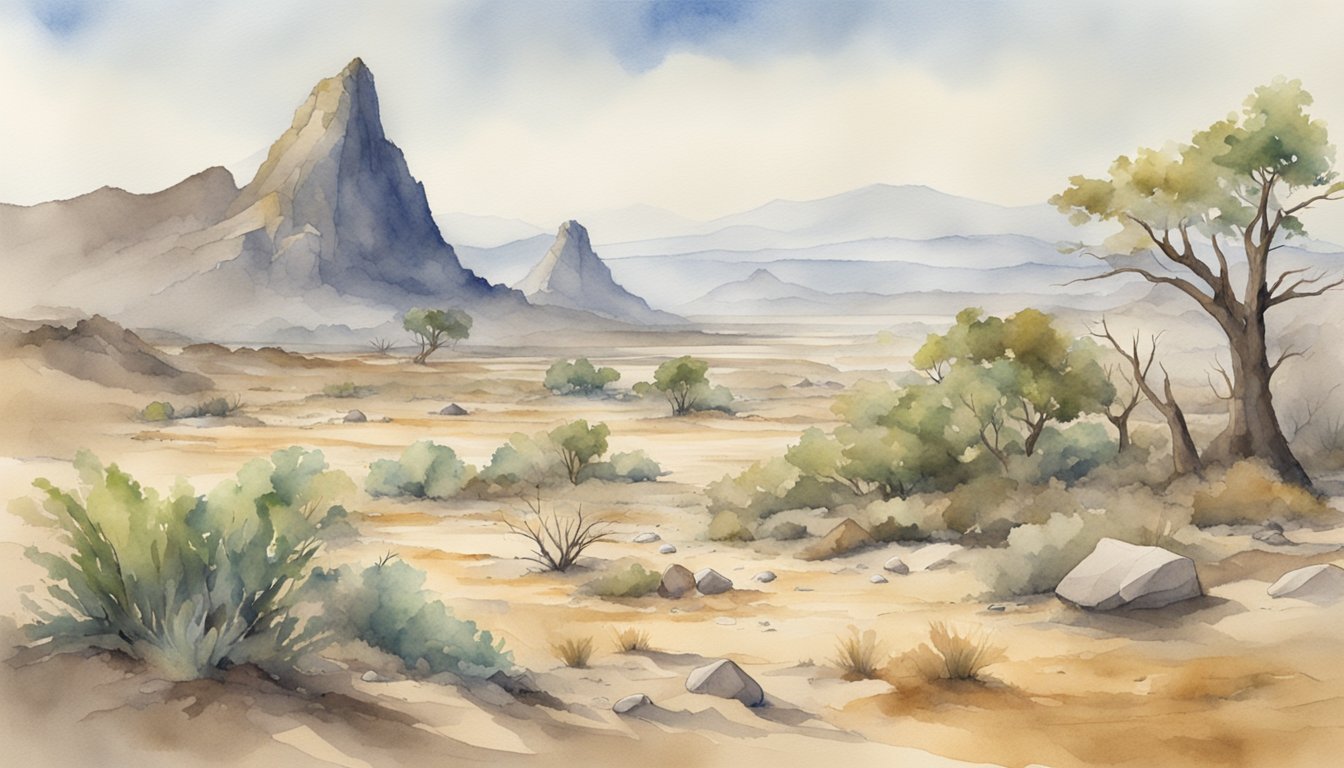The Science Behind Extinction
The extinction of dinosaurs marks the end of an era where these imposing creatures roamed Earth’s landscapes. Scientific inquiry into this event has unveiled evidence suggesting a combination of catastrophic events that led to their demise.
Cretaceous Period Climate
During the Late Cretaceous, the climate was warmer, with higher sea levels that created numerous shallow inland seas. This period, part of the Mesozoic Era, was characterized by a diverse ecosystem inhabited by dinosaurs such as Triceratops. Fluctuations in the climate also contributed to the Cretaceous-Paleogene extinction event, marking a significant shift in Earth’s biological makeup.
Asteroid Impact Hypothesis
The asteroid impact hypothesis, formulated by scientist Walter Alvarez, is a leading explanation for the mass extinction event. A massive asteroid strike, creating the Chicxulub crater in the Gulf of Mexico, is attributed to this event some 66 million years ago. High levels of iridium in the geological record, typically rare on Earth’s crust, support this hypothesis, indicating a cosmic origin.
Volcanic Activity and Its Effects
In addition to the asteroid impact, extensive volcanic activity, especially the eruptions of the Deccan Traps in present-day India, released massive amounts of lava flows and carbon dioxide, leading to substantial climate change. These series of eruptions could have significantly altered global climate conditions, exacerbating the effects of the asteroid impact and contributing to the Cretaceous-Tertiary extinction event.
Life After Dinosaurs

The extinction of the dinosaurs marked a pivotal point in Earth’s history, leading to significant changes in the planet’s biodiversity and ecosystems. This period saw the emergence and dominance of other life forms, reshaping the course of evolution.
The Rise of Mammals and Birds
In the Mesozoic era, dinosaurs dominated the land, while pterosaurs ruled the skies, and marine reptiles like mosasaurs and plesiosaurs governed the oceans. Following their extinction, a major shift occurred in the Cretaceous-Paleogene period allowing mammals and birds to expand and evolve into newly vacated ecological niches. Fossils from various sites have provided paleontologists with key insights into this transition. For example, with large predators such as the Tyrannosaurus rex gone, smaller mammals that had once lived nocturnally began to adapt to daytime activities, diversify in form, and increase in size.
Birds, the only surviving dinosaurs, underwent a significant evolutionary radiation. Modern birds are descended from a group of two-legged dinosaurs known as theropods, the members of which included the towering Tyrannosaurus and the smaller velociraptors. After the mass extinction, avian diversity flourished, resulting in the varied bird species observed today.
Ecosystem Rebalance and Biodiversity
The extinction event 66 million years ago, where an asteroid impact triggered a mass extinction, also led to a rebalancing of ecosystems. In North America and other continents, the loss of dominant herbivorous dinosaurs like sauropods allowed flowering plants to proliferate, altering plant communities and the structure of ecosystems.
As these post-dinosaur ecosystems took shape, the animals and plants continued to co-evolve. The fossil record from the early Cretaceous period onwards has been crucial for paleontologists and geologists to understand these changes. The space vacated by extinct species, such as flying reptiles, marine reptiles, and ammonites, provided new opportunities for species diversification. Reptiles like turtles, crocodilians, lizards, and snakes survived and adapted, while mammals saw a significant diversification, eventually leading to the wide array of mammalian species, including primates, that occupy the Earth today.

